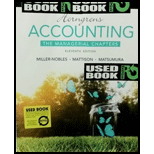
P2-351' jf n,»l« *ng transaction’., posting
\ i; • You. i uiu i s nirdicinc undo ilie business tide Vim York, M.l >. During March, die irudu il pi at tier completed the following transactions:
Mar ' York contributed $64,000 cash to the business m exchange for capital 5 Paid monthly rent on medical equipment, $630
raid $1 <000 cash to purchase land to be used in operations 10 Purchased office supplies on account, $ 1.800 19 Borrowed $24,000 from the bank for business use.
22 Paid $ 1,200 on account.
28 The business received a bill for advertising in the daily newspaper to be paid in
April, $270.
Revenues earned during the month included $6,600 cash and $5,800 on account.
31 Paid employees' salaries $2,700, office rent $1,500, and utilities $400. Record as a compound entry.
31 The business received $ 1,450 for medical screening services to be performed next month.
31 York withdrew cash of $6,600.
The business uses the following accounts: Cash;
York, Capital; York, Withdrawals; Service Revenue; Salaries Expense; Rent Expense; Utilities Expense; and Advertising Expense.
Requirements
- Journalize each transaction. Explanations are not required.
- Post the journal entries to the T-accounrs, using transaction dates as posting references in the ledger accounts. Label the balance of each account Bal.
- Prepare the trial balance of Vito York, M.D., as of March 31, 2017.
Want to see the full answer?
Check out a sample textbook solution
Chapter 2 Solutions
Horngren's Accounting
- Which is not an objective of internal controls?A. Safeguard assetsB. Improve profitsC. Ensure accurate recordsD. Promote operational efficiency no aiarrow_forwardPlease provide the accurate answer to this financial accounting problem using appropriate methods.arrow_forwardI am searching for the accurate solution to this financial accounting problem with the right approach.arrow_forward
- 20 Nelson and Murdock, a law firm, sells $8,000,000 of four-year, 8% bonds priced to yield 6.6%. The bonds are dated January 1, 2026, but due to some regulatory hurdles are not issued until March 1, 2026. Interest is payable on January 1 and July 1 each year. The bonds sell for $8,388,175 plus accrued interest. In mid-June, Nelson and Murdock earns an unusually large fee of $11,000,000 for one of its cases. They use part of the proceeds to buy back the bonds in the open market on July 1, 2026 after the interest payment has been made. Nelson and Murdock pays a total of $8,456,234 to reacquire the bonds and retires them. Required1. The issuance of the bonds—assume that Nelson and Murdock has adopted a policy of crediting interest expense for the accrued interest on the date of sale.2. Payment of interest and related amortization on July 1, 2026.3. Reacquisition and retirement of the bonds.arrow_forward13 Which of the following is correct about the difference between basic earnings per share (EPS) and diluted earnings per share? Question 13 options: Basic EPS uses comprehensive income in its calculation, whereas diluted EPS does not. Basic EPS is not a required disclosure, whereas diluted EPS is required disclosure. Basic EPS uses total common shares outstanding, whereas diluted EPS uses the weighted-average number of common shares. Basic EPS is not adjusted for the potential dilutive effects of complex financial structures, whereas diluted EPS is adjusted.arrow_forwardPlease explain the solution to this general accounting problem with accurate explanations.arrow_forward
- I need guidance with this financial accounting problem using the right financial principles.arrow_forwardGeneral Accounting Question Solutionarrow_forwardWhich is not an objective of internal controls?A. Safeguard assetsB. Improve profitsC. Ensure accurate recordsD. Promote operational efficiencyarrow_forward
 Survey of Accounting (Accounting I)AccountingISBN:9781305961883Author:Carl WarrenPublisher:Cengage Learning
Survey of Accounting (Accounting I)AccountingISBN:9781305961883Author:Carl WarrenPublisher:Cengage Learning
